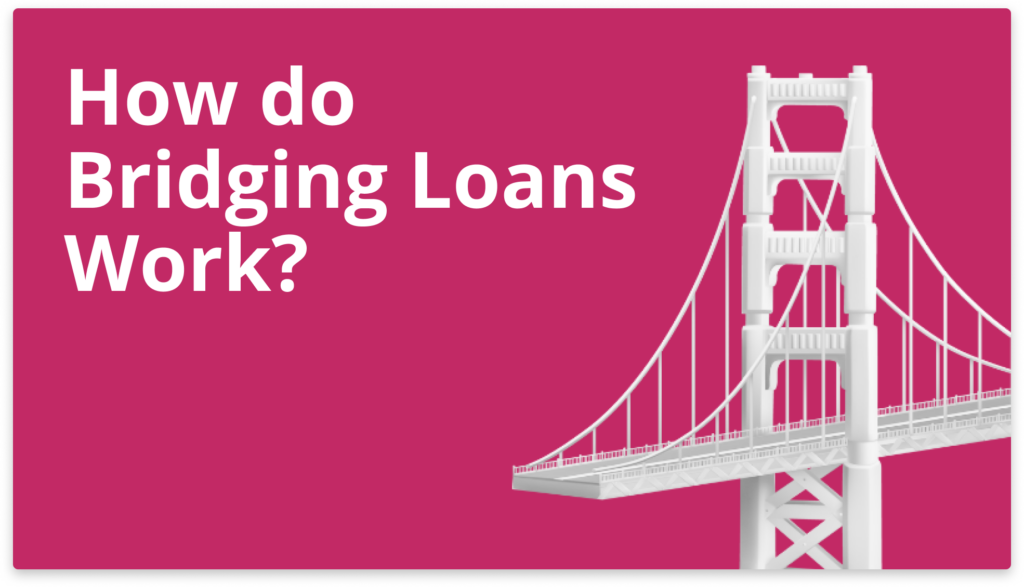Bridging loans are short-term finance solutions, often secured against property, used to cover urgent funding gaps. In this article, I’ll look at how these loans work, their practical uses, and what borrowers need to consider before taking one out.
What is a Bridging Loan?
A bridging loan is an interim finance arrangement that grants rapid access to funds while a more permanent solution is put in place.
Often used in property transactions or to meet short-term business costs, it remains active until an expected source of funds (such as a sale or longer-term loan) becomes available.
Bridging loans are usually secured, which helps speed up approval but can lead to higher interest rates compared to standard business finance.
Common Uses and Scenarios
Borrowers often rely on these short-term solutions when timing is critical or when a standard loan would take too long to arrange. Below are some typical examples:
Covering the gap when buying a property at auction, where rapid completion is required
Securing a new business site before selling the existing one
Handling urgent expenses or short-term cashflow gaps in a company
Funding improvements or refurbishments that need an immediate capital injection
Taking advantage of a time-sensitive asset purchase that cannot wait for conventional financing
Bridging Loan Key Features
Bridging loans are designed to be short in duration, often running anywhere from a few weeks up to about a year. They typically rely on an asset—often a property—for security, which allows lenders to move quickly on approvals. Unlike many standard loans, lenders here often look more at the property value and exit plan rather than focusing heavily on credit checks. Borrowers can choose monthly interest payments or roll up the amount to be paid at the end, which makes these loans a flexible solution for short-term cashflow gaps.
How Much Do Bridging Loans Cost?
Bridging loans often involve more layers of expense than a typical business loan. Most lenders quote interest monthly, which may sound manageable but can turn into a high annual rate after fees.
Arrangement charges and broker commissions are common, especially if you need help finalising the loan. Valuations come into play when property is used as security, and legal work adds its own costs. Exit fees may appear if you pay off the loan earlier or later than expected, reflecting potential losses or extra risk to the lender.
Some bridging loans also allow for rolled-up interest, which defers payments but increases the total owed if those charges compound over time.
Comparing multiple quotes is strongly advised. Even a seemingly lower monthly rate can be outweighed by additional fees, so always request a transparent breakdown of every cost involved.
Visit our Bridging Loan Calculator
Types of Bridging Loans
Open and Closed Bridging Loans
Open bridging loans work for people who know they will receive funds in the near future but cannot pinpoint an exact date, such as waiting for probate to finalize or for a property to be sold at some point in the coming months. The lender generally sets a maximum timeframe, often up to a year, and interest rates can be higher because there is no fixed date for repayment.
Closed bridging loans, on the other hand, operate around a confirmed exit date. This suits borrowers who have a known repayment event on the calendar, such as a property sale that has already exchanged contracts. Because there is less uncertainty, lenders often view these loans as lower risk, which can result in slightly better rates.
First and Second Charge Bridging Loans
First-charge bridging loans take priority over any other debts secured against the same asset. If repayment fails, this lender can claim proceeds from the asset first. That priority tends to reduce the lender’s risk, which can lead to more competitive rates. However, it also means the borrower’s property is fully on the line if they default.
Second-charge bridging loans rank behind an existing mortgage or other secured debt. Since the bridging lender would be repaid only after the primary lender, this arrangement is riskier from their perspective. As a result, second-charge bridging loans may have stricter criteria or higher interest rates, reflecting the added uncertainty about repayment if the borrower runs into financial trouble.
Pros and Cons of Bridging Loans
- Quick access to funds when time is critical
- Flexible repayment options, including rolled-up interest
- Can fill a short-term funding gap without waiting for standard loan approval
- Higher interest rates compared to mainstream business loans
- Potentially large fees, such as arrangement or exit fees
- Requires property or other high-value assets as security, placing them at risk if repayments are missed
Bridging Loan Eligibility Criteria
Lenders generally require borrowers to be at least 18 and secure the loan with a valuable asset, often property. Although credit scores can play a role, the property’s value and the amount of equity offered usually matter more.
Many bridging loans last from about one to 18 months, with some lenders prepared to extend further if the proposal appears low risk. Other factors, such as the property’s location and condition, plus your proof of income or relevant financial documents, can influence both acceptance and the final rate.
Exit Strategies
A bridging loan always depends on a clear plan for paying it off once the term ends.
Many borrowers rely on the sale of a property that is already in progress or close to completion. Others switch to a longer-term mortgage when everything is in place. Some turn to business revenue, inheritances, or the sale of shares.
Lenders typically insist on documented evidence, such as a signed agreement or proof of pending funds, to confirm that your repayment strategy is realistic. If the path to repayment looks uncertain, they may reject the application or tighten the terms.
Risks of Bridging Loans
While bridging loans offer flexibility, they come with inherent risks that borrowers should be aware of. Firstly, bridging finance generally has higher monthly interest charges than most standard business loans, so allowing the term to stretch longer than planned can lead to steep extra costs.
Another thing to consider is that, because property usually secures these loans, missing payments or defaulting may put that asset at genuine risk. Fees, including arrangement charges, exit penalties, and legal expenses, can also push the total owed above the initial estimate.
If you rely on selling a property to repay the loan and the market shifts or the sale falls through, the resulting delay could force you into paying interest for significantly longer than expected. In the worst case, a drop in property values might create negative equity, complicating your ability to refinance or settle the debt. Having an alternate plan for repayment can help ensure a short-term solution does not become a long-term liability.
Takeaway
It’s essential to approach bridging loans with a full understanding of the associated risks. Always consider potential scenarios where repayments might be delayed, and ensure you have a viable exit strategy. Consulting with a financial expert can help in assessing if a bridging loan aligns with your financial goals and capabilities.
How to Get the Best Bridging Loan for Your Needs
Navigating the world of bridging loans can be daunting, especially with various lenders offering a myriad of terms and rates. To ensure you secure the best deal, follow these steps:
Assess your credit, existing debts, and recent financial statements before approaching any lender.
Determine how much funding you need and decide on a realistic term, keeping in mind interest charges and exit requirements.
Compare various lenders, including specialist bridging firms, by looking at rates, fees, and overall reputation.
Calculate the total cost rather than focusing only on a quoted monthly rate—arrangement fees, exit fees, and legal expenses can add up.
Prepare essential paperwork in advance, such as proof of identity and property details, so the application process moves quickly.
Consider speaking with a bridging broker who might secure better offers or more flexible terms.
Confirm whether the lender penalises early repayment or allows you to settle the loan sooner without extra charges.
Review the full loan agreement to identify any clauses about late payments or changing market conditions.
Stay informed about your property’s value and, if relevant, your business revenue, in case you need to refinance or renegotiate later.
Find out more about the Best Bridging Loan Providers
Alternatives to Bridging Loans
Personal Loans
Personal loans generally offer lower interest rates and longer repayment periods compared to bridging finance. They can be repaid over one to seven years or more.
Because they are unsecured, your property is not at risk; however, missing payments can negatively affect your credit score. This option suits borrowers who need a smaller amount without the higher costs of bridging loans.
Remortgaging
Remortgaging allows you to release equity from your existing property, typically with lower interest rates than bridging loans. Repayment terms can extend from 15 to 30 years, making it a long-term solution.
This option is ideal when you have significant equity to leverage, although it increases your debt duration and overall interest costs.
Secured Loans
Secured loans let you borrow against the value of your property. They usually have interest rates lower than those of bridging loans but higher than those of primary mortgages.
With typical durations ranging from five to 20 years, these loans are suitable when you need a larger sum and are comfortable securing the debt with your property, despite the risk of repossession if you default.
Extended Mortgage
An extended mortgage adjusts your existing mortgage to access additional funds using the same property as collateral. This option typically offers lower interest rates and structured repayment plans that can simplify budgeting.
However, extending your mortgage increases your overall debt and lengthens your repayment period, which may lead to higher total interest costs.
Takeaway
Exploring alternatives like personal loans, remortgaging, secured loans, or extending your existing mortgage can provide different benefits and potentially more favourable terms in certain scenarios. Always ensure a thorough evaluation to choose the financial solution that aligns best with your situation.

Compare bridging loans
Save time and money with Business Expert & Fluent Bridging

Bridging loan FAQs
Yes, in some cases, a bridging loan can be used to refinance an existing property if the borrower has a clear exit strategy for repaying the loan.
Yes, a bridging loan can be used to purchase a property at auction if the borrower has a clear exit strategy for repaying the loan.
The APR on a bridging loan can vary quite a bit, but is typically between 10-20% APR since the interest rates are high given their short-term nature. Always check the APR when comparing bridging loan offers.
Many bridging loans can be approved within a few days, sometimes even within 24 hours, which is much faster than traditional mortgages or loans. However, exact timelines depend on the lender and the thoroughness of the application.
Bridging loans are very flexible and can be used for residential properties, commercial properties, land, specialized properties like hotels, or even heavy refurbishment projects. The key is sufficient equity in the property.
Yes, it’s common to use bridging loans to fund renovations or refurbishments for a property you plan to sell or remortgage. The after-improvement value is important.
Bridging loans can carry more risk because they are short-term and dependent on having a viable exit strategy to repay the loan. Interest rates are also higher. Managing these risks is key.
Most lenders require at least 20-30% equity in the property to approve a bridging loan. The more equity, the better the terms you can qualify for.


